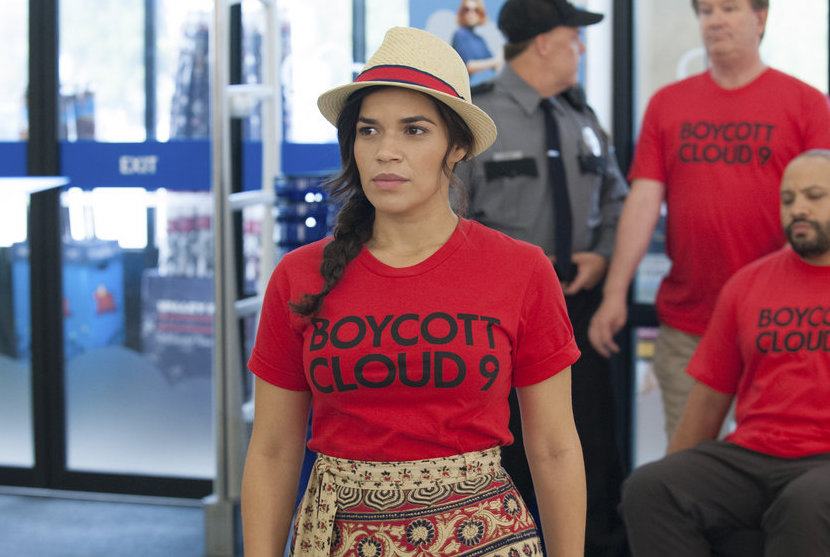The good news: women directed 25 percent of all TV episodes in the 2017-18 season and people of color helmed 24 percent, up from last year’s 21 and 22, respectively. The bad news: in terms of individual episodes, women helmed 1,085 (a 14 percent growth from 2016-17), while POC helmed 1,017 (just one percent more than last year). These are among the findings from the DGA’s annual TV Director Inclusion Report, an analysis of the nearly 4,300 episodes produced in the 2017-2018 television season, a decrease from the previous season’s all-time high of 4,500 eps.
DGA president Thomas Schlamme summed up the bittersweet study best: “It’s encouraging to see that the compass is pointing in the right direction, yet progress is mixed. The bright spot here is that the doors are finally opening wider for women, who are seeing more opportunities to direct television,” he said. “But it’s disappointing the same can’t be said for directors of color. The studios and networks who do the hiring still have a long way to go, and we are committed to continuing this important fight.”
Women directed 25 percent of all episodes, a four percent rise from last season. Black directors helmed 13 years, level with 2016-17, while Asian directors rose from five to six percent and Latinos from four to five.
White women helmed 813 episodes in 2017-18, from last year’s 714 — an increase of nearly 100. However, women of color directed 261, only 25 more than 2016-17. Male directors of color directed 756 episodes, a 14 ep dip from last season.
Breaking down individual episodes down by their directors’ race, Asians helmed nine more episodes than in 2016-17, Latinos 12 more episodes, and African Americans 14 fewer episodes.
Regarding studio hiring practices, the study found Disney/ABC featured the highest percentage of episodes directed by a woman or person of color: 51.7. The second and third studios were 20th Century Fox (47.8 percent) and Lionsgate (47.5 percent). The studio with the smallest portion of women or POC-helmed eps was Viacom with 30.5 percent.
The Inclusion Report also examined which series fared best in terms of women and POC directors. Below are the 10 series with the highest rate of hiring female directors. Bolded shows also made last year’s top 10.
- “Youth & Consequences” (8 eps total) Youtube Red/ Y and C Productions, Inc: 100 percent (4 eps directed by white women, 4 eps directed by women of color)
- “SMILF” (8 eps total) Showtime/Disney/ABC Companies: 100 percent (8 eps directed by white women, 0 eps directed by women of color)
- “Queen Sugar” (16 eps total) OWN/ Warner Bros Companies: 100 percent (6 eps directed by white women, 10 eps directed by women of color)
- “Outlander” (6 eps total) Starz Sony Companies: 100 percent (6 eps directed by white women, 0 eps directed by women of color)
- “Jessica Jones” (13 eps total) Netflix Disney/ABC Companies: 100 percent (9 eps directed by white women, 4 eps directed by women of color)
- “Better Things” (10 eps total) FX/Twentieth Century Fox: 100 percent (10 eps directed by white women, 0 eps directed by women of color)
- “Alone Together” (9 eps total) Freeform/Disney/ABC Companies: 89 percent (8 eps directed by white women, 0 eps directed by women of color)
- “Impulse” (6 eps total) Youtube Red/ NBC Universal: 83 percent (5 eps directed by white women, 0 eps directed by women of color)
- “Transparent” (10 eps total) Amazon/ Amazon: 80 percent (7 eps directed by white women, 1 ep directed by women of color)
- “Dietland” (10 eps total) AMC/ Skydance Pictures, LLC: 80 percent (7 eps directed by white women, 1 ep directed by women of color)
As this list makes clear, inclusion isn’t just about hiring women directors. While series such as “SMILF” and “Better Things” were helmed exclusively by women, they featured exactly zero directors of color. The latest seasons of “Another Period” and “Arrested Development” and the inaugural season of “The Alienist” featured no women director or directors of color.
It’s a relief that, in Schlamme’s words, “the compass is pointing in the right direction” in terms of gender and racial inclusion. But, even as the compass is showing us where to go, we have yet to get there. The overall percentages of women and people of color TV directors are growing — but at an incremental rate. Hopefully the Inclusion Report and other studies like it will inspire decision-makers to pick up the pace.
Head over to the DGA website to read the full study.







